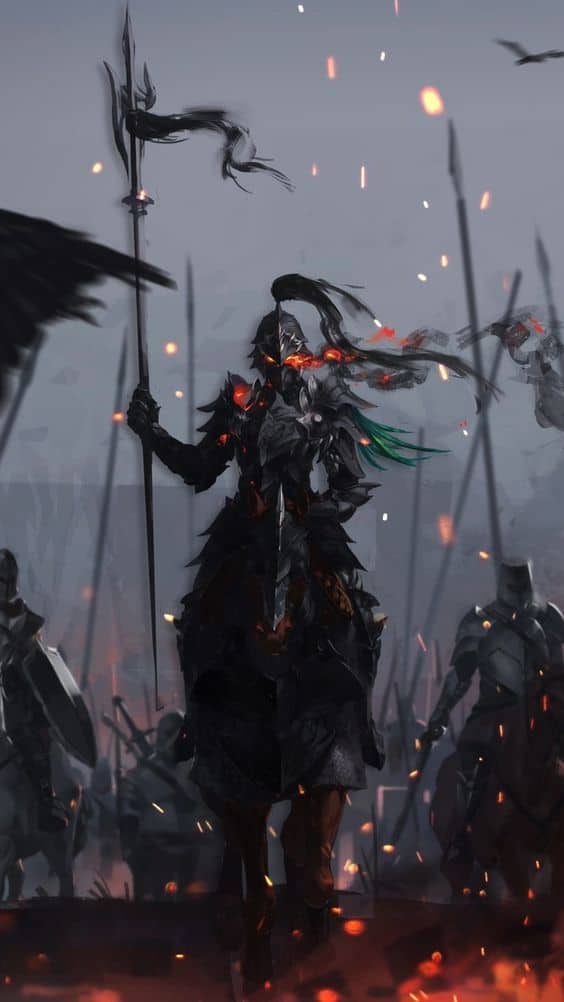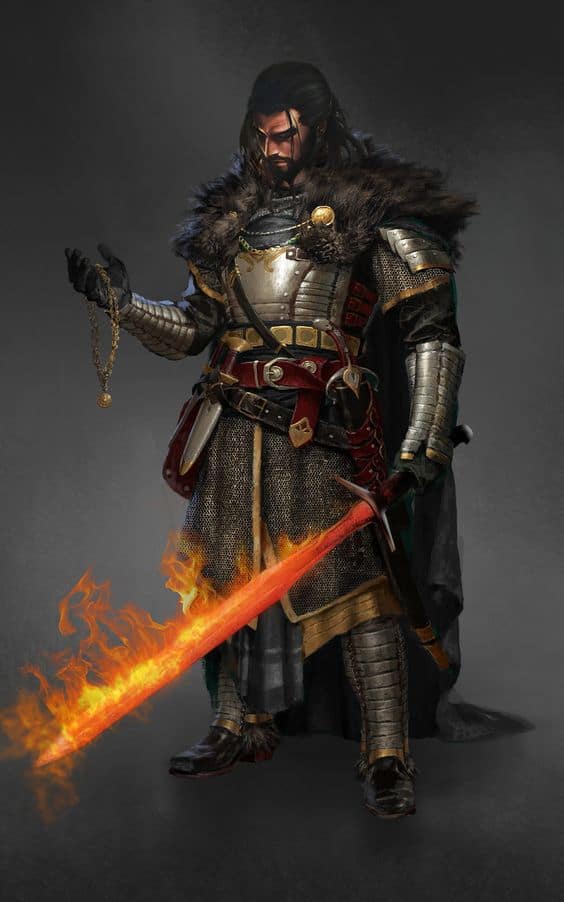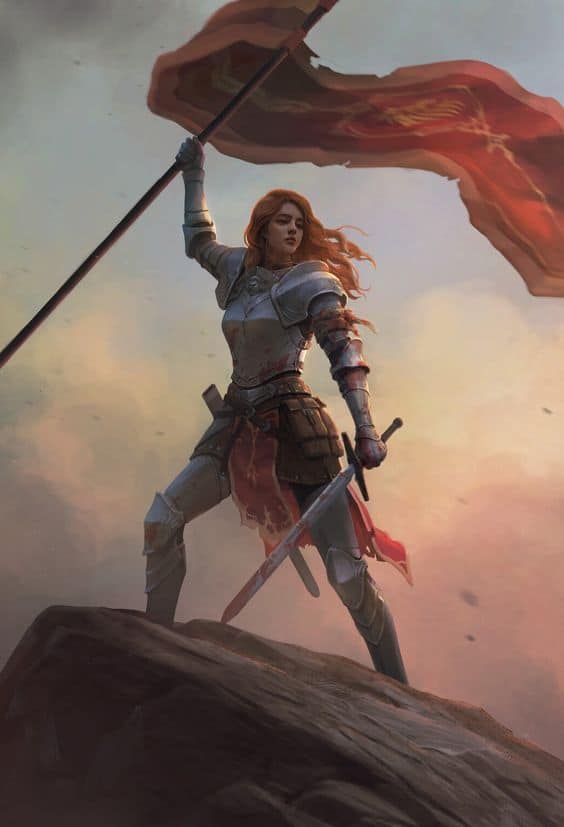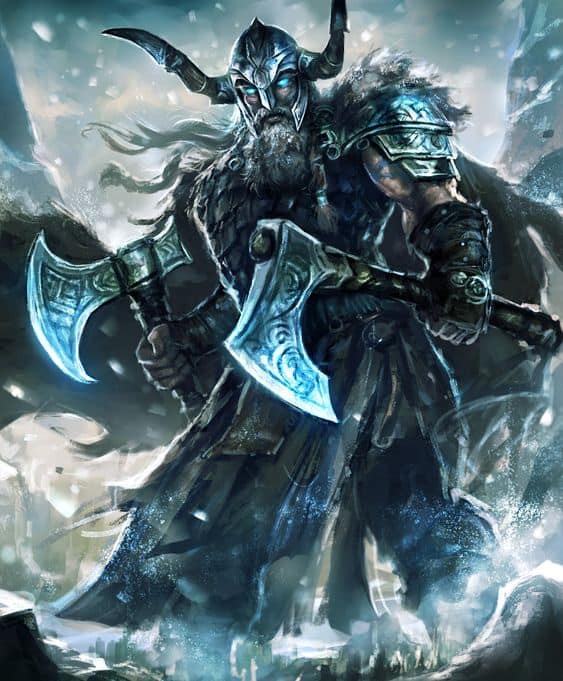D&D 5e: Oath of Conquest Paladin Guide

D&D 5e: Oath of Conquest Paladin Guide
Role in the Party
An implacable tyrant standing atop the bodies of fallen foes, Paladins sworn to the Oaths of Conquest devote themselves to the Darwinian ideal that only the strong may thrive, and will go to many lengths to ensure that they are the strongest of all.
Striding into battle, a Conqueror Paladin surrounds themselves with an aura of palpable dread. Their enemies cower in their wake, and those that manage to stand tall are cut low again with a sweep of a blade, or a burst of divine magic. And any party who quests alongside a Conquest Paladin will find a staunch ally, because even the darkest among the order understand that those who stand alone are isolated, vulnerable, and prone to fall, in time.
This guide goes into the abilities of the Oath of Conquest and breaks down potential build paths, feats, and backgrounds for making an effective character.
Epic
Good
Meh
Bad
The Oath of Conquest Paladin subclass is found in Xanathar’s Guide to Everything. Click here to pick up your own copy of Xanathar’s Guide to Everything!
Oath of Conquest Features
Oath Spells: The Paladin gains Oath spells at the levels listed below. These spells are always available and don’t cost the Paladin any of their spell choices.
Level 3
Armor of Agathys: Bonus temporary HP, and damage to any enemy that hits you while the HP holds. This is only green because the Paladin’s lower total spell levels reduce the effect.
Command: Make the enemy drop their weapon or fall prone, then lock them in place. This can win early game encounters, scales in target number, and the effects are good enough that they’re useful all the way to level 20;
Level 5
Hold Person: The effect is good, but the target selection can limit how useful this is in a lot of campaigns, and like all big save-or-suck spells, this is better for classes that are going to pump their casting stat, not their hitting things with weapons stat. Still, if this goes off, automatic critical hits with Smite stacked on top of them hurt.
Spiritual Weapon: Bonus action casting, consistent damage in a type that almost nothing resists, and it even scales reasonably. This is fantastic, even at level 5 when the Paladin gets it.
Level 9
Bestow Curse: A wide list of effects and a casting range of touch mean the Paladin can see some use from this. It’s possible to lock a low WIS enemy out of the fight entirely if they fail one save, and that’s always powerful.
Fear: A big AOE and a powerful effect already make Fear a good spell, but this also synergizes with a lot of the Conquest Paladin’s subclass abilities for further effects.
Level 13
Dominate Beast: With a 1 minute duration when cast at level 4, a 10 minute duration as a level 5 spell, and advantage on the save if you’re fighting the beast, there are few times this is going to be useful to a Conquest Paladin.
Stoneskin: This is a great buff, but costs gold every time it’s cast. Still, you get it for free, and having the material components on hand just in case is a very good idea.
Level 17
Cloudkill: This is a big, long lasting, mobile area of damage and obscuring terrain. Because it moves away from you, it’s perfect for casting into the door of a dungeon room, or as the party push up through a street, using the cloud of poisoned death as cover and dealing with anything that manages to make it through.
Dominate Person: This is a very good spell, but it’s much more powerful when upcast by full casters. Leave it to the Wizard, instead.
Channel Divinity: From level 3, the Conquerer Paladin gains access to two Channel Divinity options.
Conquering Presence: An AOE fear at level 3 is a very powerful effect, and this will serve admirably until the Paladin gets the Fear spell at level 9, which is slightly better. But having another button to slam that will lock down groups of enemies, and comes back on a short rest, is always useful to have.
Guided Strike: Simple, but effective. A flat +10 to hit, decided after the roll has been made, can all but guarantee an attack lands. Pairing this with a class that has a built-in damage steroid with Smite, and really likes the Great Weapon Master feat, is obviously great.
Aura of Conquest: From level 7, the Conqueror Paladin emanates a 10ft aura that reduces the speed of any creature that is afraid of them to 0.
This ability has the potential to be hilariously powerful. Locking down the movements of multiple melee enemies is the obvious use, but there are many edge cases where this becomes obscene. Firstly, knocking an enemy prone with 0 speed means they can no longer stand up, as that costs movement.
Second, with weapons like Polearms, it’s possible to keep an enemy at a distance where they can’t hit you and stab them safely from range. Last, the Fear spell only allows saves when enemies can no longer see you. An enemy that can’t move, can’t get out of the line of sight, meaning they’re stuck unless they can force the fear effect to dissipate.
The only reason this ability has been rated green is that certain enemies are flat out immune to fear effects, which takes a lot of the teeth out of the Conquest Paladin’s ability to control the battlefield. But against any enemy that this can influence, if a fear effect goes off, it’s very close to an instant win condition.
Scornful Rebuke: From level 15, whenever a creature hits you, it takes damage equivalent to your CHA modifier. The damage isn’t high, but this is a permanent effect, so it’s going to add up over time.
If you can pair it with ways to get resistance, or temporary HP, the ability becomes significantly stronger.
Invincible Conquerer: Like all Paladins, the Conqueror has a level 20 capstone, and like all Paladins, it’s an incredibly powerful once per day effect. As an action, for one minute, the Paladin gains:
-
Resistance to all damage
-
One more attack per turn whenever they take the attack action
-
Melee attacks crit on a 19 and 20
The damage resistance alone is a powerful effect, but more attacks and 100% increased critical hit chance for uber-Smites turns the Conqueror into an avatar of destruction for the minute this ability is active.
Strengths
The Oath of Conquest lives up to its namesake. It wants to hurl itself into the midst of combat, smashing enemies down onto their knees, then keeping them there with its subclass abilities.
This is something it does admirably. Some Paladins buff the party. Some pick a single enemy and deal apocalyptic damage. Paladins of Conquest instead spread panic among anything that dares oppose them, with a wealth of control spells and abilities that all work perfectly alongside one another.
Once the enemy has been locked in place, the Conqueror will cut them down with heavy hits from their weapons, backed up by critical bursts of damage using Smite.
That’s not to say that the allies of a Conquest Paladin gain nothing from their presence. The Conqueror is a great linchpin, the bastion against which their enemies batter, falter and inevitably fail. The Paladin spell list also has some great buffs, and the innate abilities of the class; including extra healing and defensive auras, are all still in play.
Outside of combat, a Paladin devoted to the Oath of Conquest still makes for a good party face, as stern and uncompromising as that face might be. The class is also excellent for keeping everyone topped up on HP, and has the stats and skill slots to comfortably take on the more physical challenges.
Weaknesses
The biggest weakness of the Oath of Conquest is the same as every Paladin. Resource management. A lot of the power of the class is held in their spell slots, and mismanaging them, or burning through them too quickly, can lead to the character feeling toothless as they do nothing but take basic attack actions.
The Conquest Paladin is also specifically vulnerable to enemies that are immune to the Frightened condition. A large portion of the published monster list (around 15%) have complete immunity to Frightened, including many of the Undead and Construct types. Regularly running into these enemies locks out a large portion of the power of the Oath of Conquest.
Lastly, the ranged options available to the class are narrow. If the fighting draws to a long distance, many Paladins won’t have options beyond any weapons they’ve packed, or any cantrips they’ve picked up from other sources.
Best Race Options
Fallen Aasimar: All Aasimar are solid options for the Paladin, but the Fallen are specifically fantastic for the Oath of Conquest, purely because of their Necrotic Shroud action, which is another AOE fear effect that also adds damage to attacks for 1 minute.
Everything else on offer builds on what the Paladin already wants to do. Darkvision, twin resistances, great stats, and a once-per-day minor Lay on Hands effect.
Eladrin: The stats are only fine unless you’re rolling a DEX-based Paladin, (which is still a fine choice) but the rest of the abilities are useful, including Darkvision and Perception proficiency.
But we’re here for Fey Step, a bonus action 30ft teleport that, if you take Winter, fears one enemy within 5ft of where you land.
Metallic Dragonborn: Any choice of stats and a damage resistance are nice, but we want the Breath Weapons, including a once-per-day blast that can knock everything in a 15ft cone back and prone. On top of this, a Paladin with a spare feat slot can take the racial Dragon Fear feat, which is yet another AOE fear effect, just in case you feel the class is lacking.
Choosing the Right Skills
Paladins are traditionally a class that’s limited on skill slots, so it’s important to make choices that are going to have an impact.
Perception is important for all characters, as seeing a threat is the first step to not dying from it.
Athletics is almost as essential for many Conqueror Paladins, as they will be looking to grapple or shove enemies prone to hold them immobile.
It’s also normally worth taking one or more social skills, like Persuasion or Intimidate, as the high CHA of the class naturally lends it to a more social role.
Fitting Feats
Shield Master: Spend your bonus action knocking enemies prone, and once they’re down on the ground and Frightened, they’ll never move again. Benefits to DEX saves are a nice addition too and can help keep the character alive against AOE blasts.
Great Weapon Master: More damage, both as a flat amount with a hit penalty and as bonus action attacks under certain circumstances.
For a class that can just choose to give itself +10 to hit, this is incredible. Pro tip: It works with any two-handed weapon. Martial Polearms count and have reach.
Sentinel: Become impossible to escape from. Disengage no longer allows creatures to move away from you without taking an attack of opportunity. If that attack hits, their speed becomes 0.
As a second bonus, if an enemy attacks an ally within 5ft of a Paladin with this feat, they can spend their reaction to attack, potentially landing another out-of-turn Smite. That’s a huge increase in DPS. Just prepare to be targeted once the enemies realize what’s happening.
Optimal Backgrounds
Sailor: Athletics and Perception skills couldn’t be better. You’ll probably know if Navigator’s Tools and water vehicles are useful in your campaign, but they’re nice to have anyway, for the one time your party takes an unexpected boat ride.
Soldier: Athletics and Intimidation are perfect skills that synergize with the Oath of Conquest. A gaming set is less useful, but land vehicles can come up. Especially if the Paladin summons a mount to pull it along.
Courtier: Excellent social skills and two languages are great for pointing the character towards a role as the party face.
Multiclassing Options
A lot of the Oath of Conquest’s power is tied to its level 7 Aura of Conquest ability. So it’s recommended that any multiclass is taken after this key level unless you have something specific in mind.
Battle Master Fighter: The base kit of the Fighter only offers Action Surge (which, to be fair, is incredibly powerful) and a small heal to the Oath of Conquest.
We’re here for Maneuvers at level 3. The Battle Master learns three and gets four uses per rest, but we’re here for two specific options. Precision Attack, which adds a d8 to an attack roll after it is made, makes it much easier to consistently land the big hits. And Menacing Attack, which increases the damage of a hit and adds a Fear effect rider.
Divine Soul Sorcerer: The Sorcerer/Paladin is a multiclass everyone knows about. The major benefits are increased spellcasting power and Smite slots, and Metamagic to allow Quickened spells. The Divine Soul, as well as being perfectly flavored, offers a ton of flexibility, giving this build access to the Sorcerer and Cleric spell lists.
The once-per-rest boost to a save or attack roll is just a nice bonus, especially for a frontline class that might be eating a lot of enemy hate.
Soulknife Rogue: Any Rogue offers a lot of out-of-combat utility as a multiclass. Sneak attack also acts as another source of consistent damage, as long as the right weapons are used.
The Soulknife in particular lets the Oath of Conquest boost their skills with psychic dice and free psionic communication, but the big draw is Psychic Blades. These can be freely used in melee or at ranged, stack Sneak Attack damage and Smite, and allow a bonus action attack if the Paladin has their off-hand free, potentially landing even more damage.
3 levels is a fine dip, but this could easily be a split multiclass, leveling side by side.
Would I recommend playing an Oath of Conquest Paladin?
Yes.
The Oath of Conquest is an incredibly powerful subclass, with fantastic synergy across its spell list and all of its abilities. Unlike many subclasses, there’s no weak link here. No ability that could have been swapped out for something else. Only value.
And while the fluff and flavor of the class suggest something a little darker, there’s nothing here that says an all-conquering Paladin has to be evil. A strong party that destroys everything in its path is everything that the Oath of Conquest believes in, and no matter the party composition, they’re sure to be a key part of it.









